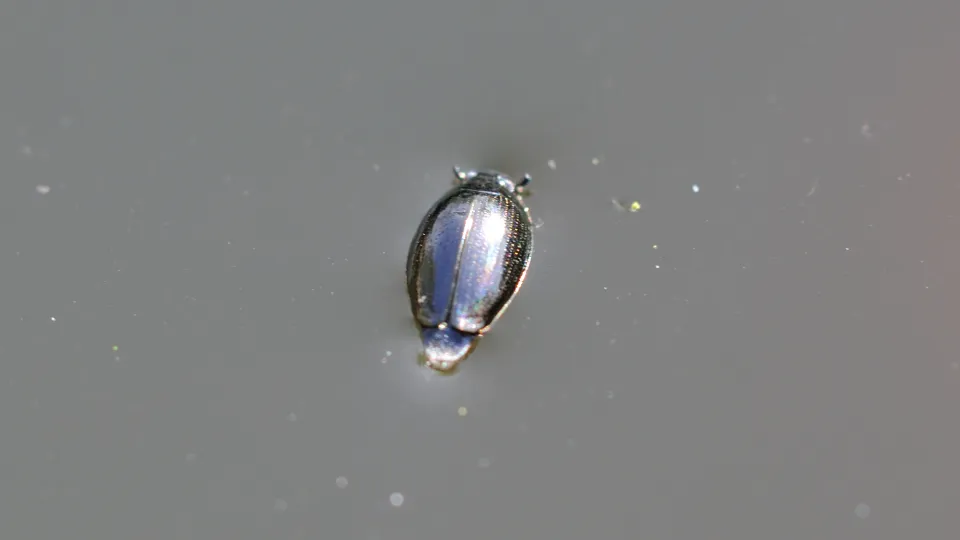
Whirligig beetle
Ever wondered what that little black dot whirling in circles on the top of the water of a pond is? Those are whirligig beetles! Often seen shooting across the water surface on the hunt for its next meal.

Ever wondered what that little black dot whirling in circles on the top of the water of a pond is? Those are whirligig beetles! Often seen shooting across the water surface on the hunt for its next meal.
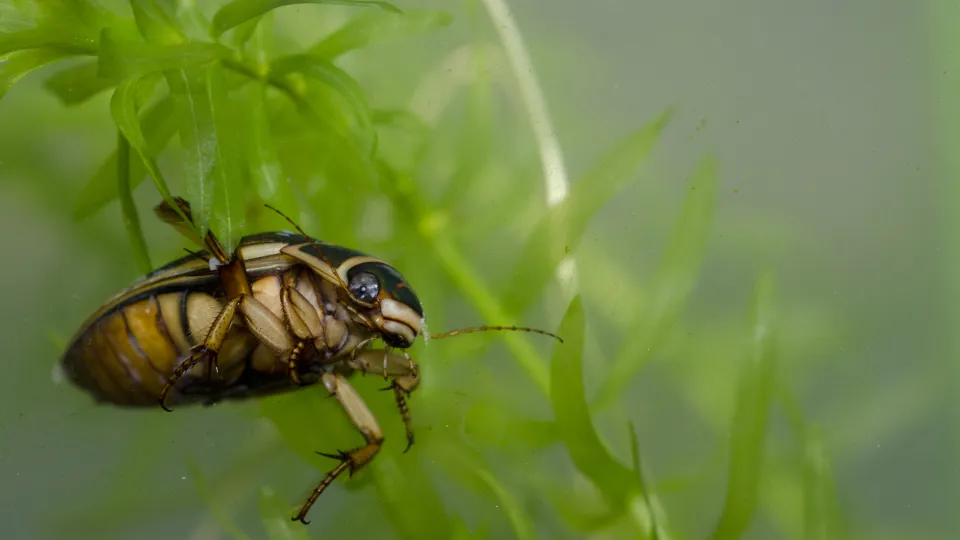
The Great diving beetle is a large and voracious predator of ponds and slow-moving waterways. Blackish-green in colour, it can be spotted coming to the surface to replenish the air supply it stores beneath its wing cases.

When threatened, the Green tortoise beetle acts just like a tortoise, pulling its feet and antennae in and hunkering down, gripping the leaf it is on as tightly as possible. Look for it on White Dead-nettle in gardens and hedgerows.

The common name of the Bloody-nosed beetle derives from its unusual defence mechanism: when threatened, it secretes a distasteful blood-red liquid from its mouth. This flightless beetle can be found on grassland and heathland, and along hedgerows.
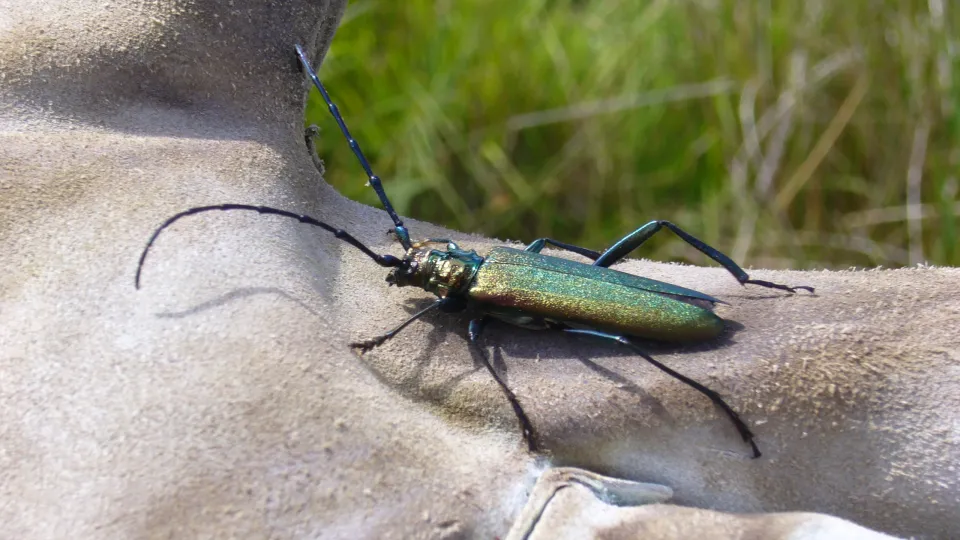
The metallic-green Musk beetle lives up to its name: it releases a musky-smelling secretion when it defends itself. It is a longhorn beetle, so has lengthy antennae. Look for it near wetlands in summer.
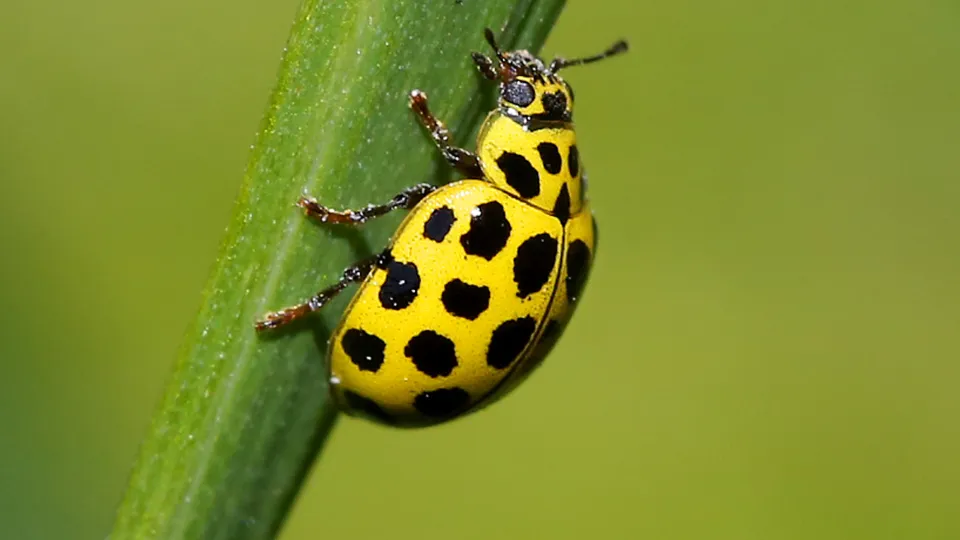
The 22-spot ladybird is one of three yellow ladybirds in the UK. Look for it in grassland, woodland and gardens. Ladybirds are beneficial insects, managing garden pests - encourage them by putting up a bug box.
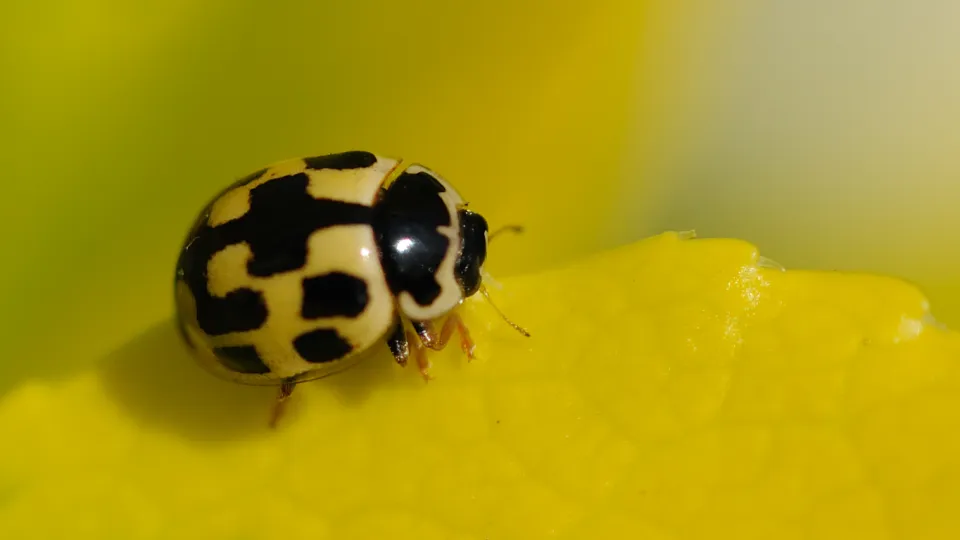
The 14-spot ladybird is one of three yellow ladybirds in the UK. Look for it in grassland, woodland and gardens. Ladybirds are beneficial insects, managing garden pests - encourage them by putting up a bug box.

A non-native species originating from Asia, the harlequin ladybird is prevalent in towns and gardens.
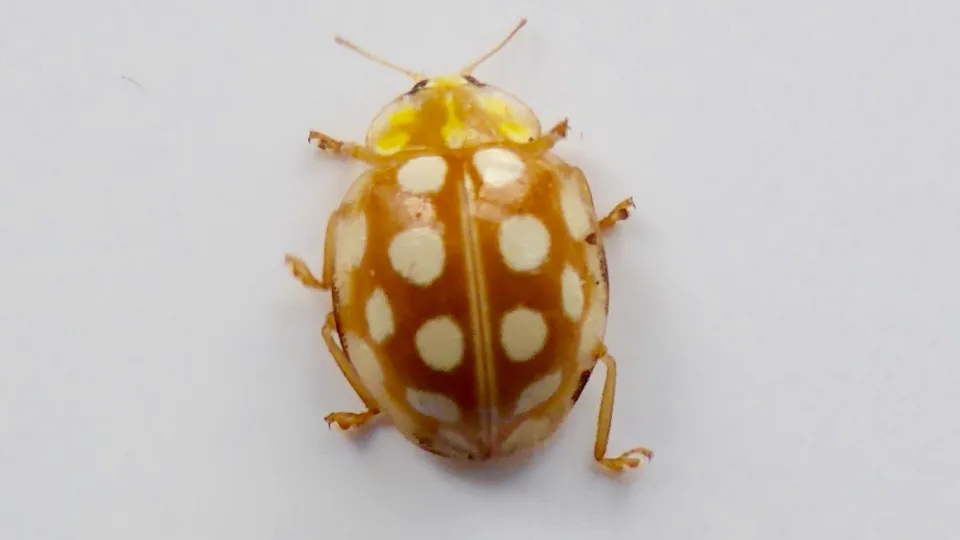
The orange ladybird is pale orange with up to 16 cream spots on its wing cases. It feeds on mildew on trees like sycamore and ash, and hibernates in the leaf litter. It often turns up in moth traps.
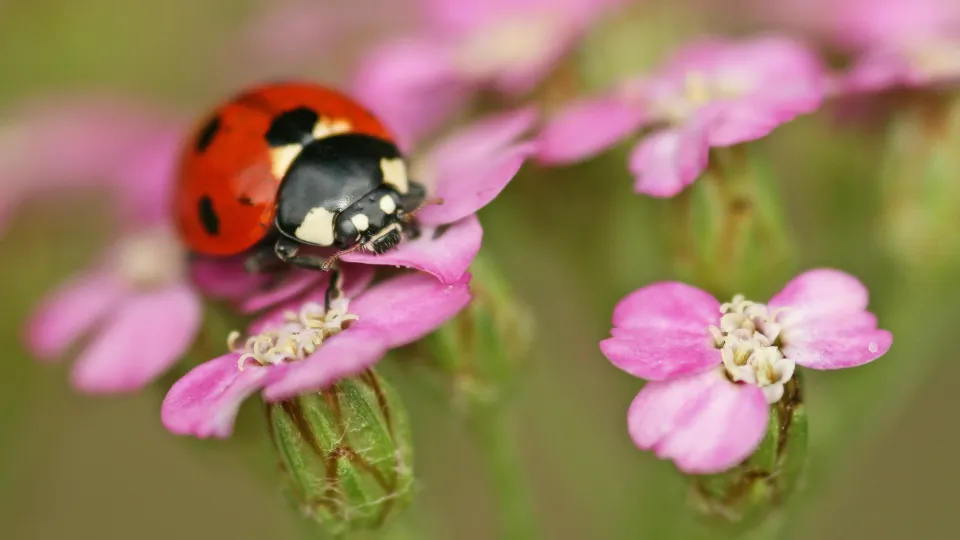
One of our most common ladybirds, the black-on-red markings of the 7-spot ladybird are very familiar. Ladybirds are a gardeners best friend as they eat insects that love to nibble on garden plants! You can encourage them into your garden by putting up a bug box.